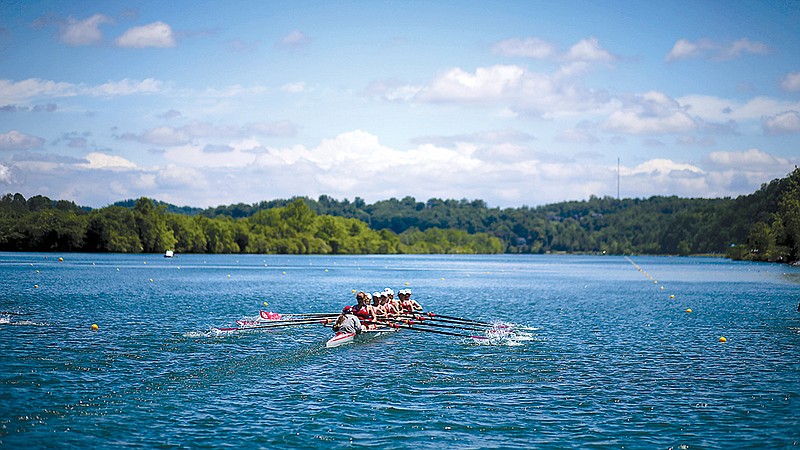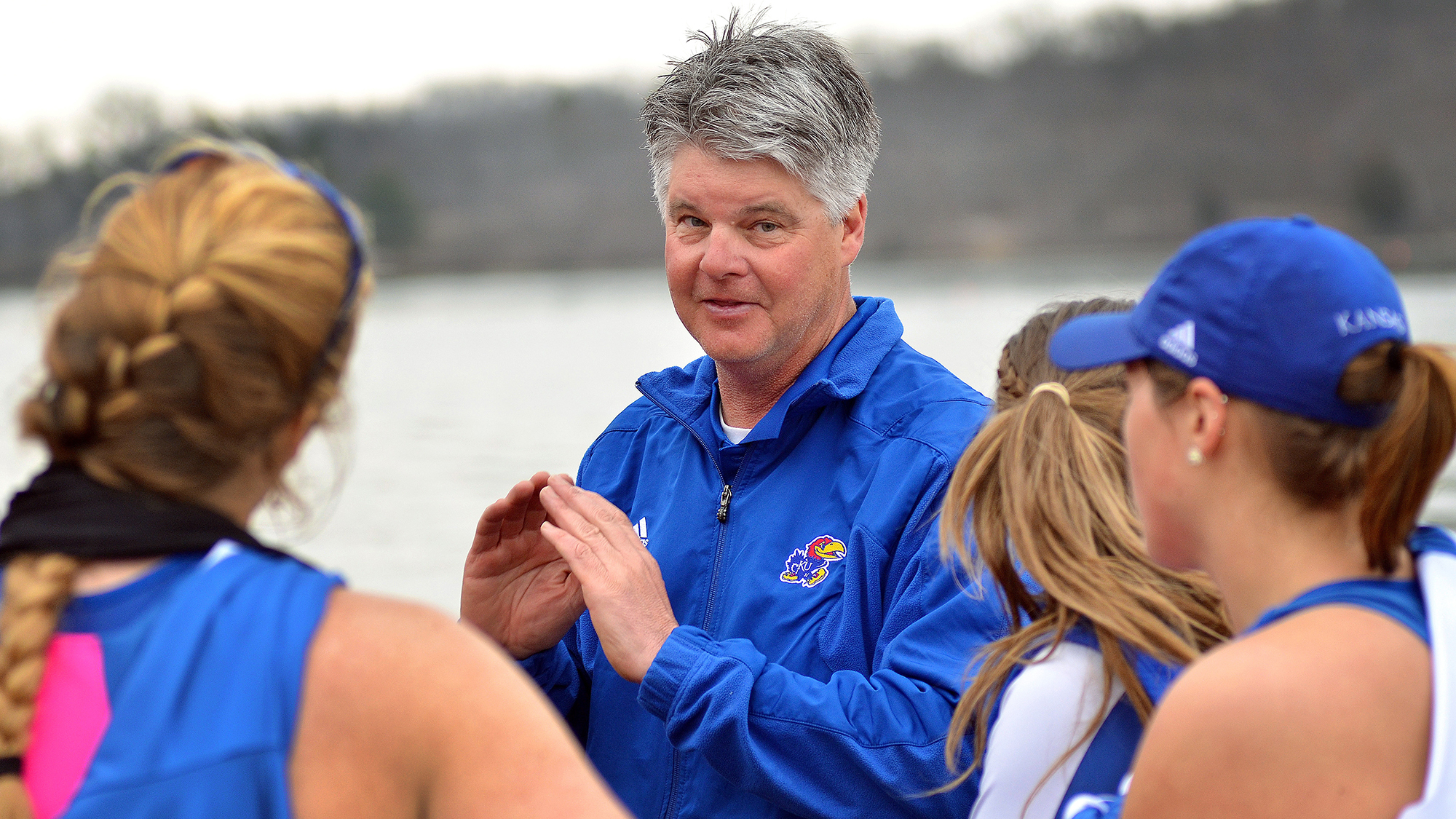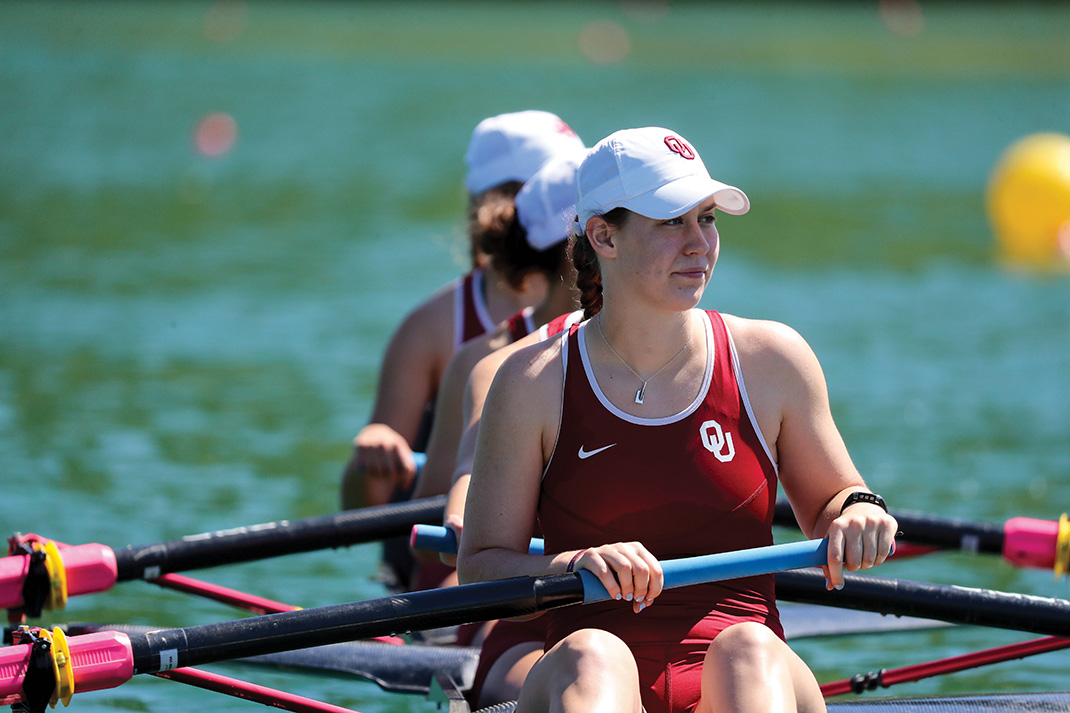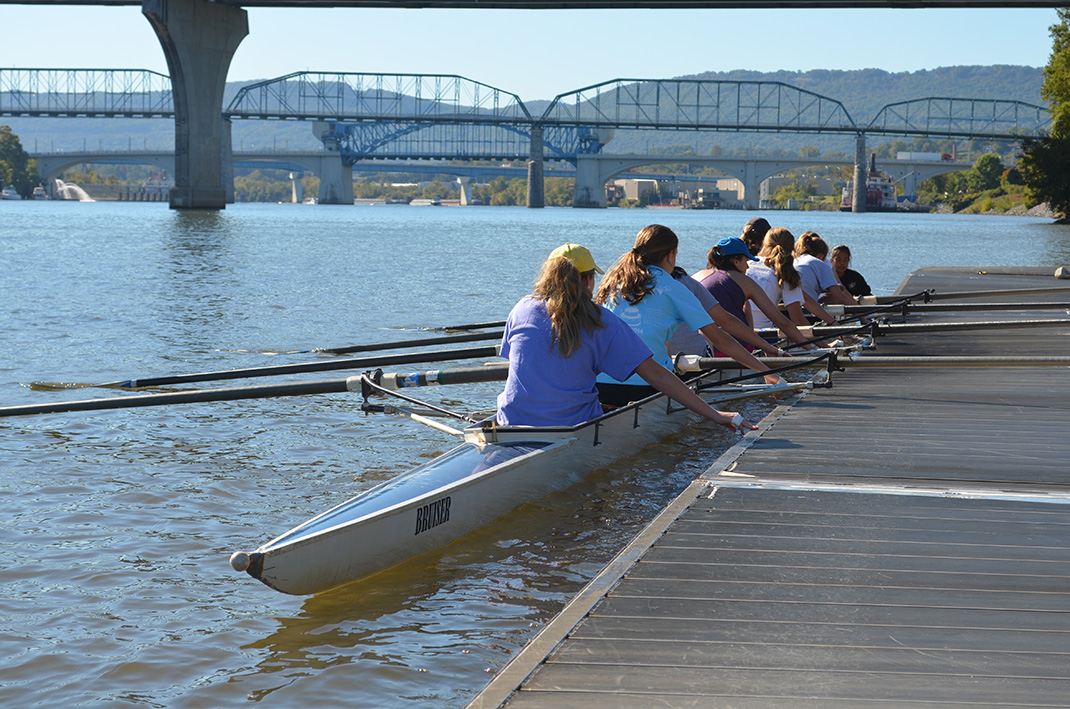When Girls Preparatory School senior Anna Oglesby and hundreds of other high school athletes take on the Head of the Hooch Nov. 4 and 5, they won't just be rowing for the fame and glory of winning the regatta. No, their performance, attitude and interactions with their coaches and teammates could help determine whether they get access to potentially tens of thousands of dollars in athletic scholarships.
For women especially, but for men as well, NCAA rowing scholarships carry surprising heft. The NCAA allows as many as 20 full scholarships per college team for women's rowing - more than for any other female sport. In comparison, there are only eight potential scholarships for women's tennis and 12 for softball.
Oglesby is currently being recruited by Clemson, the University of Kansas and the University of Oklahoma, all of which have out-of-state annual costs in excess of $40,000. If she can stand out at the Hooch, it could mean the difference between taking on student debt or not. The scholarships and recruiting process are fiercely competitive. GPS rowing head coach David Hall says that, while his program's squad has roughly 40 rowers, on average only one or two girls will be actively recruited each year by Division I college programs, the highest level of competition in collegiate athletics.
A tide of opportunity
"Women's rowing has grown so much, in large part due to Title IX," says Kendall Schmidt, an assistant coach with the Duke University women's rowing program.
Title IX, passed in 1972, is meant to ensure equity between men's and women's athletic scholarships at the collegiate level. Neither men's nor women's sports are to be funded in excess of the other. However, NCAA football is a male-only sport and has a large roster - and thus a large number of potential scholarship recipients.
Enter rowing, which has become one of the premier athletic scholarship programs for women at dozens of universities across the country. Men's programs flourish as well, but scholarship opportunities are far greater for women.
Despite the relative scarcity of high school rowing programs compared to more populated sports such as basketball or track, those who are lucky enough to find their way to rowing find themselves with far more options to help with college funding.
"It was really shocking when my dad and I researched online about it," says Larkin Brown, a GPS junior and a teammate of Oglesby's. "I'm surprised every day by how many doors [rowing] has opened for me."
Because Brown is still getting her name out to various programs around the country, she declined to name any particular schools she's interested in. That will come next year for her. However, she's already patently aware of just what this could mean for her.
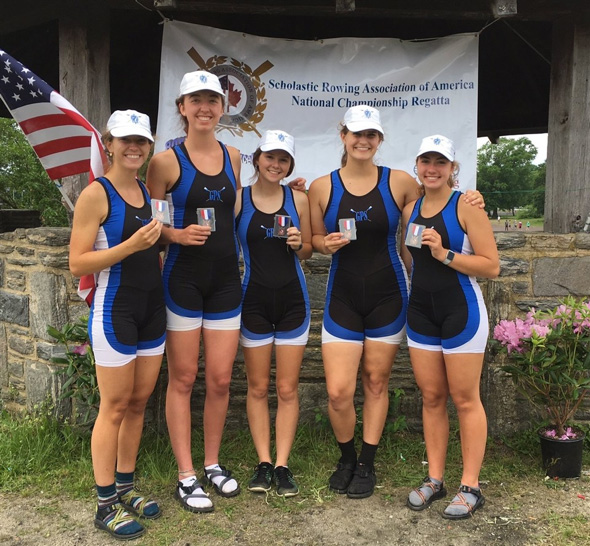 GPS rowers Rebecca Guhde, Larkin Brown, Anna Oglesby, Allison Smith and Mary Louise Whitfield attended the Scholastic Rowing Association of America National Championship Regatta in May. The earned a bronze medal in the women’s junior four event, racing together in a four-person boat with Oglesby acting as the coxswain.
GPS rowers Rebecca Guhde, Larkin Brown, Anna Oglesby, Allison Smith and Mary Louise Whitfield attended the Scholastic Rowing Association of America National Championship Regatta in May. The earned a bronze medal in the women’s junior four event, racing together in a four-person boat with Oglesby acting as the coxswain.The competition beyond the competition
Out of roughly 7,500 collegiate varsity female rowers, about half got scholarships through their sport, according to eCollegeFinder.org. Many of the universities with top-notch rowing programs are academically prestigious, too - making the general admission process especially rigorous and hopeful enrollees' uniqueness that much more meaningful. It also makes the battle for rowers to get noticed and recruited a fierce one.
The knowledge that prospective teams and coaches could be watching you race at regattas weighs heavily on the minds of top high school athletes, and Hall says the Hooch's prestige means coaches from around the country will definitely be in the stands watching potential recruits row.
"Just the sheer number of boats and teams means you've got great competition. It's absolutely one of those races that great programs come to," he says.
The pressure to perform, not only on an individual level but to help your boat, is omnipresent.
"I have to be on my A-game at all times," says Brown, who can't meet in person with any college coaching staff right now due to her status as a high school junior. Deadlines for when NCAA coaches can communicate with high school athletes are strictly enforced, and for rowing, that means coaches can't personally reach out until September of an athlete's junior year. But prior to that, rowers like Brown can send coaches emails on their performance and inform them of their team's times and upcoming races.
"You just have to constantly work toward improvement. I think about it a lot," Brown says.
Athletes handle the pressure differently. Oglesby, for example, says she tries her best not to focus on who could be watching. As a coxswain, the member at the stern of the boat who calls out instructions to keep the rowers on track and in sync, her focus has to be on her boat.
"My priority is always my girls," Oglesby says. "Sure, you never know who could be watching, but you just have to focus on doing the best you can."
Teamwork makes the dream work
Every high school rower is tested at various distances on indoor rowing machines, called ergometers. The baseline for recruiting one rower over another is the athletes' ERG scores, or how far they can virtually row based on a set of simulated conditions. Different collegiate programs have different benchmarks - athletes below a certain time on the various distances tested might not even be considered.
Making oneself competitive is more than just a numbers game, though. Even though Brown says she gets up before 6 a.m. many mornings for extra technique practice, how she functions with a team is what college coaches really want to know.
"One of the most important components is the team atmosphere. You can have some of the best rowers in the world, but if the team doesn't work together, you just won't go fast," Brown says. "You have to trust everyone in your boat implicitly."
Both Hall and Schmidt agree.
"[ERG scores] are what they're looking for, but once someone interests them, then they start talking to coaches and athletes and judging their leadership," says Hall.
Duke admitted less than 10 percent of overall applicants into the university in 2016. That selectiveness means they take everything into account when considering a recruit.
"When opportunities to watch kids we're talking to take place, we always take note of how well they flow with the rest of the boat," Schmidt says. "One of our biggest values is the team's needs are ahead of the individual's needs. To win an ACC [Atlantic Coast Conference] Championship, we need everyone on their A-game."
When thousands of participants descend upon the Head of the Hooch, you can be assured every one of them will be striving to show their mettle.
By the Numbers
55.5: Percentage of female high school crew members who receive athletic scholarship money when they go to college11.92: Percentage of female high school equestrians who receive athletic scholarships money for college, the second-highest percentage for female athletes next to rowing17.88: Percentage of male high school crew members who receive athletic scholarship money when they go to college3.11: Percentage of male high school fencers who receive athletic scholarship money for college, the second-highest percentage for male athletes next to rowing$21,053: Value of the average scholarship for Division I female rowing athletes$15,162: Value of the average scholarship for Division I female athletes among all sports20: Maximum number of full-ride scholarships available to individual Division I and II female rowing teams64: Average size of Division I female rowing teams152: Total number of colleges with varsity rowing programs in the United States7,517: Number of female collegiate varsity crew members in 20172,914: Number of male collegiate varsity crew members in 201735,110: Number of female collegiate varsity track and field members in 2017, the highest number of female participants in any sport45: Years since Title IX was passed into law0: Number of athletic scholarships Ivy League schools distribute (Ivy League schools provide need-based financial aid and do not offer athletic scholarships)Sources: eCollegeFinder.org; scholarshipstats.com; ncaa.org; athleticscholarships.net
